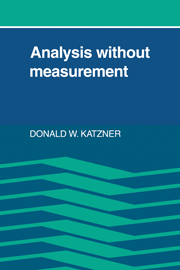Book contents
- Frontmatter
- Contents
- Preface
- Dedication
- 1 Introduction
- 2 Notes on measurement
- Part I Theoretical methods
- Part II Applications to theoretical problems
- Prologue
- 8 Political systems
- 9 Planning
- 10 Simultaneous change and modernization
- 11 Profits, optimality, and the social division of labor in the firm
- Part III Empirical verification
- Index
10 - Simultaneous change and modernization
Published online by Cambridge University Press: 04 August 2010
- Frontmatter
- Contents
- Preface
- Dedication
- 1 Introduction
- 2 Notes on measurement
- Part I Theoretical methods
- Part II Applications to theoretical problems
- Prologue
- 8 Political systems
- 9 Planning
- 10 Simultaneous change and modernization
- 11 Profits, optimality, and the social division of labor in the firm
- Part III Empirical verification
- Index
Summary
Modernization is a process of change. Economic development is only one of many interdependent aspects of the modernizing process. This is hard to dispute and yet there are practically no current theories of economic development that include sociological, cultural, and political change as a part of their dynamic fabric. Nor, for that matter, are there noneconomic theories that explicitly account for impact on and feedback from economic variables. Either, it would seem, one believes that economic development causes sociological, cultural, and political modulation, and hence is only concerned with economics, or one feels that sociological, cultural, and political modifications are preconditions for economic change, and therefore only the noneconomic factors are important. The obvious truth of the matter is that economic, sociological, cultural, and political transformations are all occurring simultaneously and any theory that does not explicitly allow for this is subject to rather severe limitations.
The purpose of this chapter is to illustrate a way of constructing models in which both economic and noneconomic change may be analyzed simultaneously. The examples presented are syntheses of the efforts of several authors, each writing from the point of view of his own discipline. No claims of comprehensiveness or correctness are made for the results. Because each author has his own concept of what is important, and because he may leave out elements that others regard as essential, the works upon which the following is based cannot be regarded as representative of the thinking within their respective disciplines. Furthermore, any synthesis necessarily retains much of the restrictiveness and many of the failures of the sources from which it is drawn.
- Type
- Chapter
- Information
- Analysis Without Measurement , pp. 185 - 204Publisher: Cambridge University PressPrint publication year: 1983



